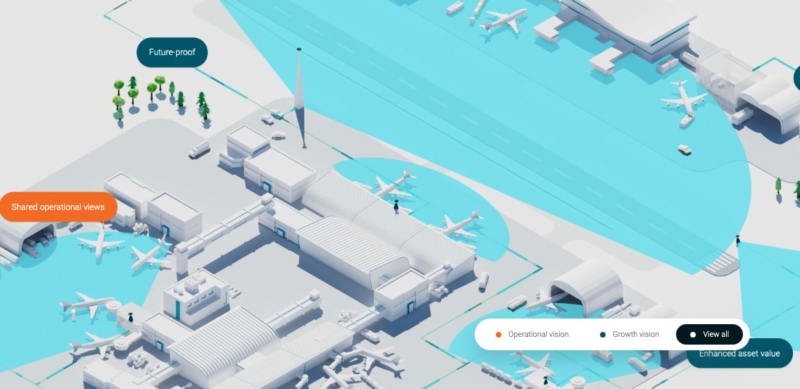To most people, the idea of a digital tower means using a mast full of cameras to recreate the view from a control tower in a totally screen based environment. The images from the cameras are displayed on a panoramic video wall in a room that could be on or off the airfield, even somewhere hundreds of miles away.
It’s a model that works well for lots of airports, especially those that are smaller and where it would be helpful to free up some airside real-estate, but it doesn’t work for everyone.
A single camera array just cannot provide the optimal balance of resolution, coverage and fidelity needed to manage the size and complexity of a major High Intensity Runway Operation (HIRO) airport. Of course, it’s still possible to digitise those operations – as NATS and Searidge Technologies has proven in Singapore and Hong Kong – but not every airport will want or need to get rid of their existing physical tower and move to a fully digital environment.
That’s where the Hybrid Tower comes into play. Think of it as a ‘digital extension’, delivering the advanced ATM vision that comes with a digital facility but from within an existing, traditional tower.

Explore how a Hybrid Tower can transform an airport operation and massively expand the capability of existing air traffic control assets.
In a Hybrid Tower, the views from cameras distributed around the airfield are displayed on screens situated on each controller working position. This means every controller can always choose the best possible view for their specific role and have access to many of the advanced tools – object tracking, digital binoculars, radar tagging and augmented airfield overlays – that a full digital facility offers. All the while the traditional view out of the tower windows remains available for shared situational awareness.

A Hybrid Tower brings many of the benefits – like augmented reality labels and overlays – into the traditional, physical tower environment.
I see this as a hugely attractive option for mid to large hub airports that are looking to enhance their operational capability (including accessing the AI tools Searidge has developed), but also for those looking to grow and expand. In the past, plans for a new runway or terminal might have necessitated the building of a new tower, with all the cost, time and work that this entails. By strategically placing cameras around any new airfield development and piping the views into an existing tower, it’s possible to support that expansion without any new ATC facilities being required. And as the airport grows and develops, the operator can simply add additional camera arrays to provide the best views in a way that is scalable, future-proof and much more cost effective.
The Hybrid Tower was the topic of my presentation at CANSO Airspace World last month. It is an option that I think will be become increasingly attractive as the industry returns to growth and airports need access to the transformative benefits of digital tower technology.
You can explore some of those benefits in our new Hybrid Tower experience. Play around in our virtual airport and see how a hybrid approach can deliver both operational and business benefits that would otherwise be impossible from a traditional control tower. I hope it gives you some greater insight into why the future for airport operations really is digital in one form or another.
The Hybrid Tower is just one of the models of digital tower NATS offered with Searidge Technologies. If you have any questions about how they work or any other part of our digital tower portfolio, please do leave a comment and I’ll do my best to answer them.
Comments
Please respect our commenting policy and guidelines when posting on this website.



